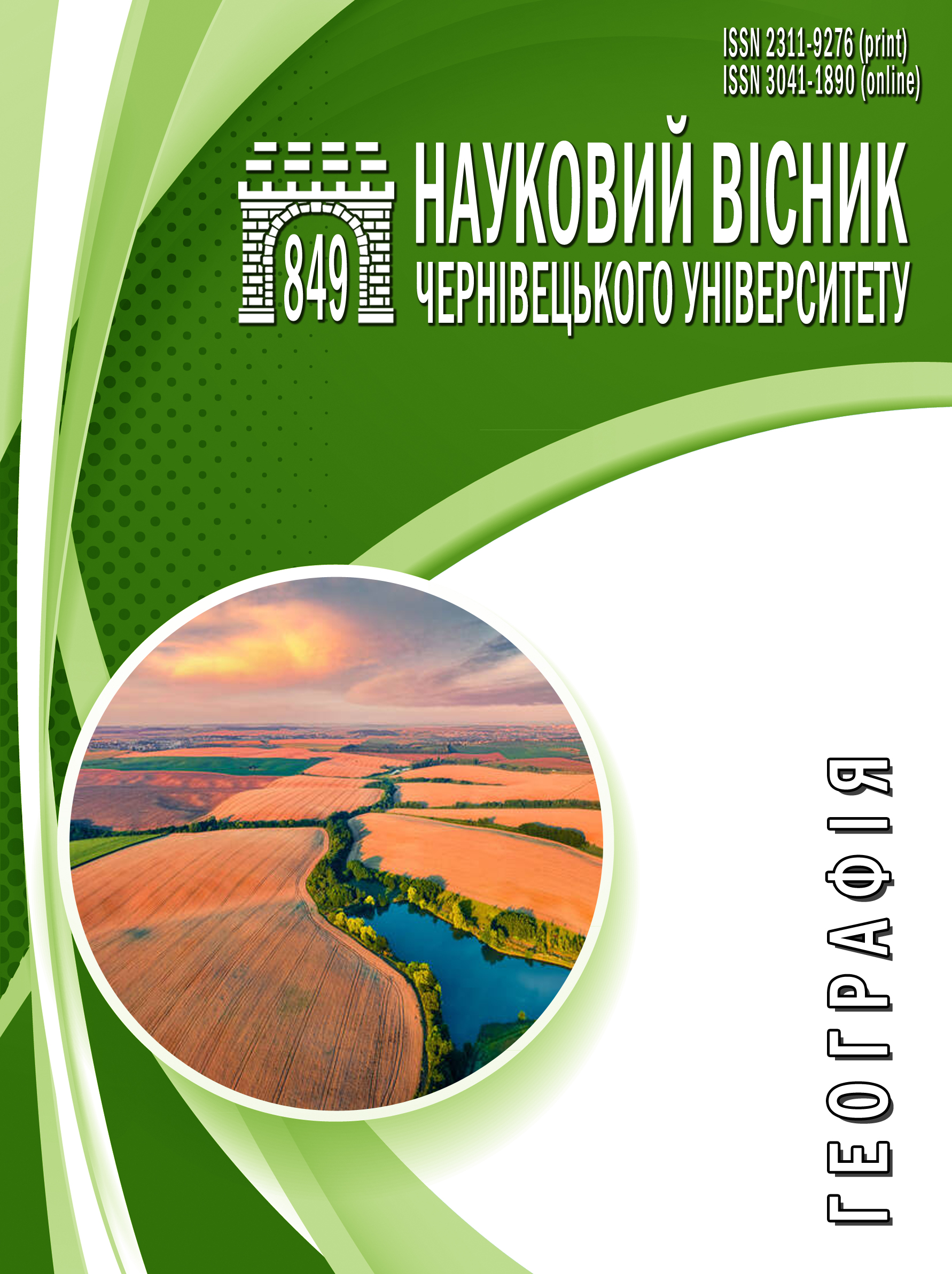The landscape approach to studying the spatial structure of karstified areas
DOI:
https://doi.org/10.31861/geo.2024.849.135-142Keywords:
karstified areas, landscape structure, karstified landscapesAbstract
Based on the analysis of modern theoretical and methodological concepts of landscape structure, as well as the results of personal research on karstified areas – cartographic, comparative, and classificatory – the conceptual foundations and methodology for studying the structure of karstified landscapes have been revealed.
Contemporary landscape science addresses a wide range of issues related to the spatial organization of territories, with a particularly productive approach rooted in the philosophy of structuralism. Karstified areas are characterized by a polygenic type of spatial structures. This polygenicity is shaped by karstogenesis, which is the primary driver of the functioning and development of karstified landscapes (KL). It determines the form and content of their spatial organization, intrazonal distribution, and their classification within lithogenic landscapes.
An important method for studying the spatial structure of karstified areas is landscape cartography, which is based on the indicative properties of individual components and complexes, as well as their classificatory features. The territorial organization of karstified areas at the topological level is unique and is characterized by diffuse, patchy, concentric, or fragmented dendritic patterns. The structural peculiarities of KL are also evidenced by their species diversity, fragmentation, variegation, and complexity. The taxonomic specificity of the structure of KL necessitates the identification of intermediate levels in the hierarchy of morphological units.
Large-scale mapping of karstified areas across different regions has substantiated the morpho-structural approach to the classification of karst landscapes. According to this approach, four categories of KL are distinguished, with the criterion being the varying rank of karstogenic units involved in the formation of the genetic-morphological structure of the landscape. Landscape studies of karstified areas provide a reliable mechanism for comparing and evaluating different categories of karst landscapes. This approach enables the alignment of karstological and landscape classifications, as well as the assessment of their resources, environmental monitoring, and the development of appropriate measures for the sustainable development of these territories.
References
Гродзинський, М. Д. (2005). Пізнання ландшафту: місце і простір : Монографія у 2-х т. (Т 2). Київ : Видавничо-поліграфічний центр «Київський університет». [Hrodzynskyi, M. D. (2005). Piznannia landshaftu: mistse i prostir : Monohrafiia u 2-kh t. (T 2). Kyiv : Vydavnycho-polihrafichnyi tsentr «Kyivskyi universytet».]
Гродзинський, М. Д. (1995). Стійкість геосистем до антропогенного навантаження. Київ : Лікей. [Hrodzynskyi, M. D. (1995). Stiikist heosystem do antropohennoho navantazhennia. Kyiv : Likei.]
Пащенко, В. М. (1999). Методологія постнекласичного ландшафтознавства. Київ : НАН України, Інститут географії. [Pashchenko, V. M. (1999). Metodolohiia postneklasychnoho landshaftoznavstva. Kyiv : NAN Ukrainy, Instytut heohrafii.]
Проскурняк, М. М., & Андрейчук, В. М. (1998). Структура закарстованих ландшафтів: Теорія. Методика. Регіональні особливості. Чернівці : Рута. [Proskurniak, M. M., & Andreichuk, V. M. (1998). Struktura zakarstovanykh landshaftiv: Teoriia. Metodyka. Rehionalni osoblyvosti. Chernivtsi : Ruta.]
Проскурняк, М. (2013). Методика картографічного дослідження структури закарстованих ландшафтів. Географічна наука і практика: виклики епохи: Матеріали міжнародної наукової конференції, присвяченої 130-річчю географії у Львівському університеті (Львів, 16–18 травня 2013 р.), (2), 109-113. [Proskurniak, M. (2013). Metodyka kartohrafichnoho doslidzhennia struktury zakarstovanykh landshaftiv. Heohrafichna nauka i praktyka: vyklyky epokhy: Materialy mizhnarodnoi naukovoi konferentsii, prysviachenoi 130-richchiu heohrafii u Lvivskomu universyteti (Lviv, 16–18 travnia 2013 r.), (2), 109-113.]
Published
Issue
Section
License
Copyright (c) 2024 Scientific Herald of Chernivtsi University : Geography

This work is licensed under a Creative Commons Attribution-NonCommercial-NoDerivatives 4.0 International License.


